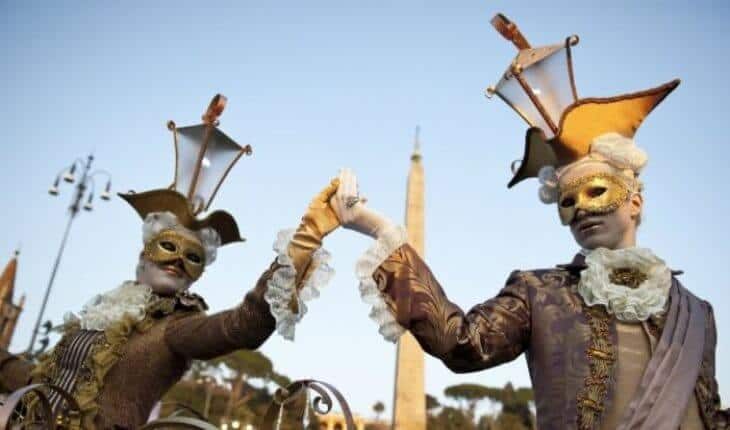From Saturnalia to Rome’s Carnevale Today
Carnival is celebrated all around the world, but like “all roads,” it likely has roots in Rome. Now a Roman Catholic celebration, Carnival takes place in the days before Lent, the 40-day period in which Catholics abstain from a chosen vice (the word Carnevale comes from carnovale, which means “removal of meat”). However, Carnival probably started as the pagan Saturnalia festival of ancient Rome.
Origins of Roman Carnival
Saturnalia suspended work and business, temporarily “freed” slaves, and eased moral restrictions. Saturn was the Roman god of agriculture, and the festivities honoring him involved decorative masks, rituals and drunken parties.
The festival was adopted in the age of Catholicism with a few adaptations. As early as 1143 AD, the Pope held ceremonies in today’s Testaccio neighborhood of Rome. This included jousting, duels, and hunting. However, it wasn’t until Pope Paul II came to power and relocated his residence to Piazza Venezia that Carnevale truly took off. The Carnival festivities moved there with him, making Via Lata (now Via del Corso) a natural setting for the most anticipated events of the Carnival: the Inaugural Parade and the Race of the Barbary Horses.
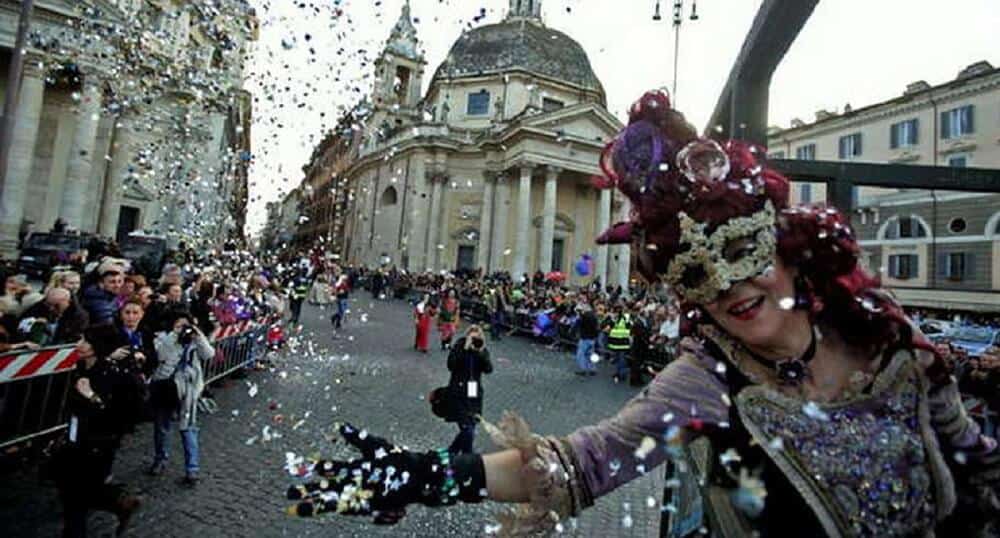
Via del Corso: track of the Berber horse race
Via del Corso was the central racetrack of Carnival. The races started in Piazza del Popolo and stretched down Via del Corso, ending at Piazza Venezia. There were races for children, elderly people, donkeys and buffaloes. One pope, Alexander VI Borgia, even introduced a race of prostitutes in 1501. Of all the competitions, the Barbary horses created the most chaos. La Corsa dei Berberi, “The race of the Berbers,” focused on a specific breed, known as the Berber horse, or Barb horse, which was bred prolifically in ancient Rome for its strength, stamina and speed. Those qualities made the animals the ideal chariot horses for competitors in Circus Maximus. Their reputation carried on into the Roman Catholic Carnival.
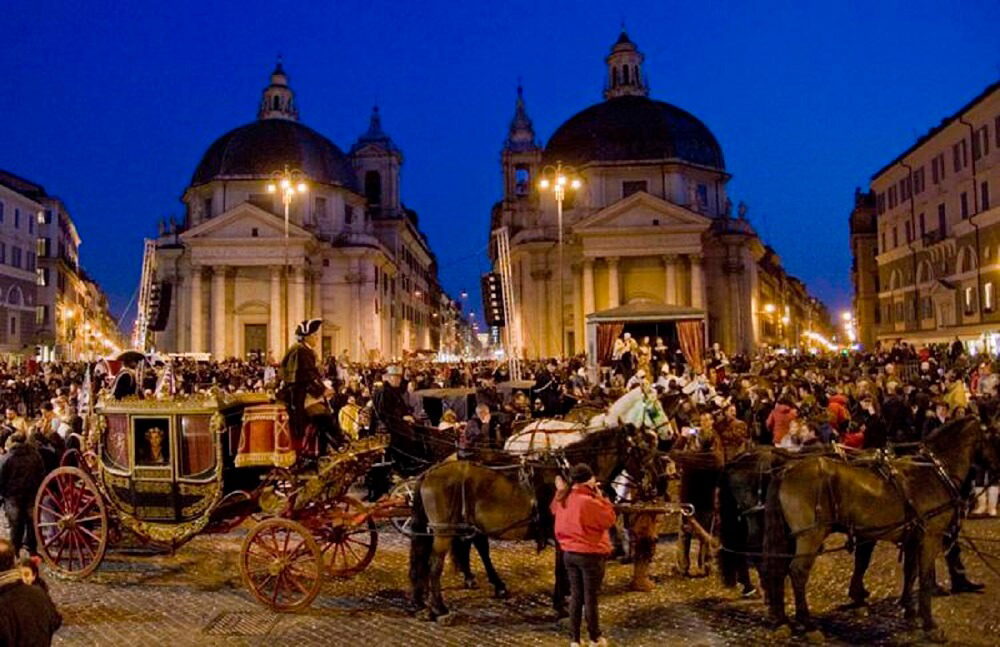
Noble families contributed male Berber horses to participate in the race and braided colorful ribbons into their manes. Spectators gathered at Piazza del Popolo to watch the preparation of the horses and make wagers. Uninhibited by riders, the horses galloped about a mile, finishing in Piazza Venezia, where the owners of the winning horse were presented with a decorative saddle.
Modern celebrations of Carnival across Italy
The equine race was abolished in 1874 by King Vittorio Emanuele II after a lethal accident, and since then, Rome’s Carnival festivities have gone mostly dormant. The spirit of the carnival, however, has survived through special celebrations such as those organised by cultural associations like “Il Carnevale Romano Storico”. This association operates in the fields of cultural promotion and strives to preserve the tradition of the Roman Carnival.
The last celebration of Carnival organised by “Il Carnevale Romano Storico” was held before the pandemic, but the celebrations organized in the past have included theater performances, historical re-enactments, the famous equestrian parade, fireworks, street art performances, concerts, and masquerade balls.
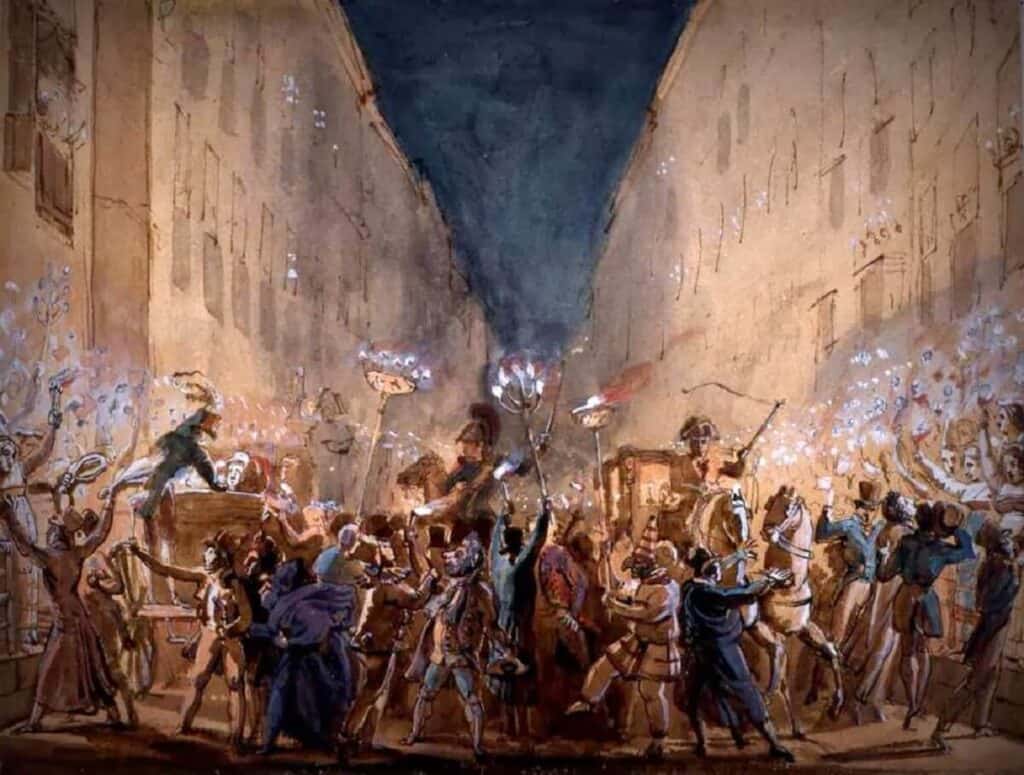
The modern carnival has even included the famous Candles Feast or “Festa dei moccoletti”, a group game which used to conclude the Roman Catholic Carnival. The feast took place at sunset on the evening of Mardì Gras. Participants wore decorative masks and carried a lit candle or a lantern, trying to maintain their flame while simultaneously attempting to extinguish other participant’s lanterns. If your flame went out, you were forced to take off your mask.
Some Carnival celebrations have revived in the rest of Italy too. Since its reinstatement in 1979, Venice’s Carnival has brought revellers to canals for parades in which colorful floats dance on water and acrobats twirl and balance on tightropes. Decorative masks and costumes shroud the city in mystery. The regions of Piedmont and Sicily are also known for their celebrations, which include similar events involving shiny masks, and elaborate costumes.
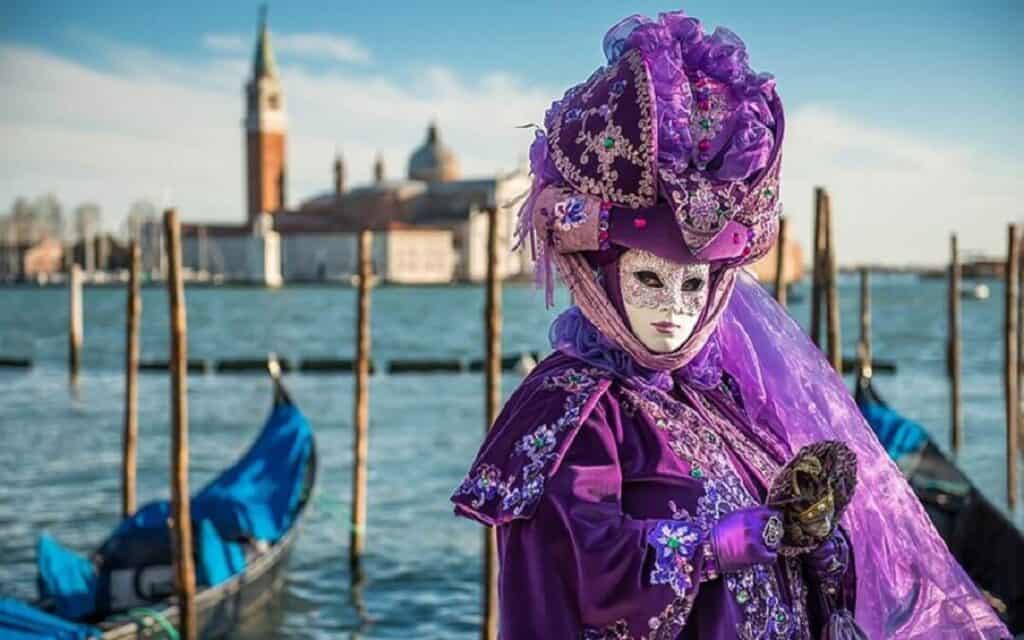
Carnival 2025 in Rome
Today in Rome, you might see some costumed and masked characters around Piazza Navona and Via del Corso, but the holiday is mostly celebrated by children in school. Shrove Tuesday, or Martedì Grasso, falls on March 4 this year, so look out for Carnival festivities leading up to that date. Try popular Carnival foods like castagnole, the famous sugar-coated fried dough balls, or snack on frappe, which are crunchy strips of fried dough dusted with powdered sugar.
On March 1, get ready for the Tiber Carnival, a fun sports event where people of all ages don masks and enjoy a stroll along the Tiber’s banks. Participants can also explore the river using canoes, paddleboards, and inflatable boats. Children and families will be welcomed at Scalo de Pinedo (Flaminio metro station). Later, a parade will begin, leading to Castel Sant’Angelo and Piazza Pia.
Not far from Rome, near Lake Vico, the Ronciglione Carnival is organized every year. Until March 4, the Carnival of Ronciglione prepares to welcome its visitors with a centuries-old festival beloved by its frequent spectators and capable of attracting audiences from all over the peninsula, so much so that Ronciglione is renamed the Carnival City. Visit the website for more information.
And that’s not all! On Saturday, March 1, the Ballon Museum at Nuvola di Fuksas will host The Black Museum – Carnival Edition, a Carnival event celebrating extravagant elegance.
The Tarantella del Carnevale returns to the Auditorium Parco della Musica on Sunday, March 2, with a festive celebration for all ages. Traditional masks and dancers will bring the energy of the Tarantella to life with a grand concert at 6pm in Sala Sinopoli and a masked parade at 5pm in the outdoor spaces of the Auditorium Parco della Musica Ennio Morricone.
Also on Sunday, March 2, the Pincio Skaters invite Carnival lovers to join them for the traditional Carnevale al Pincio. The event kicks off at 2pm in Piazzale dei Martiri, at Ponte del Pincio—a perfect way to celebrate in style!
If you’re ready to have a good time, many clubs in Rome throw carnival parties and themed events. Don’t forget, you might need to wear a mask!


